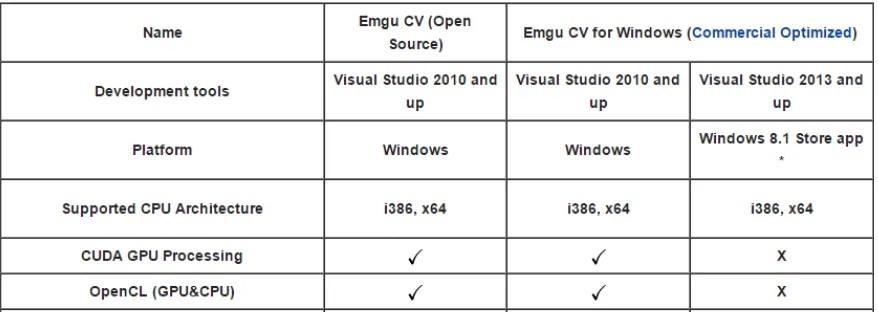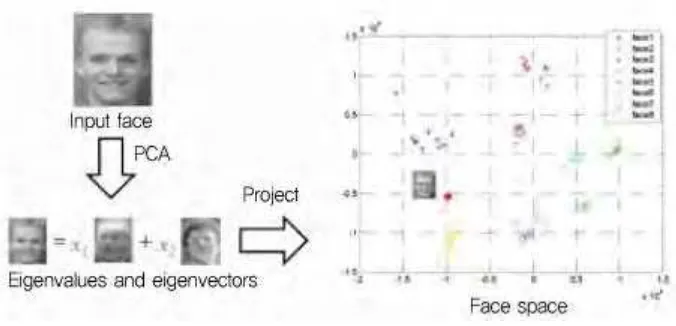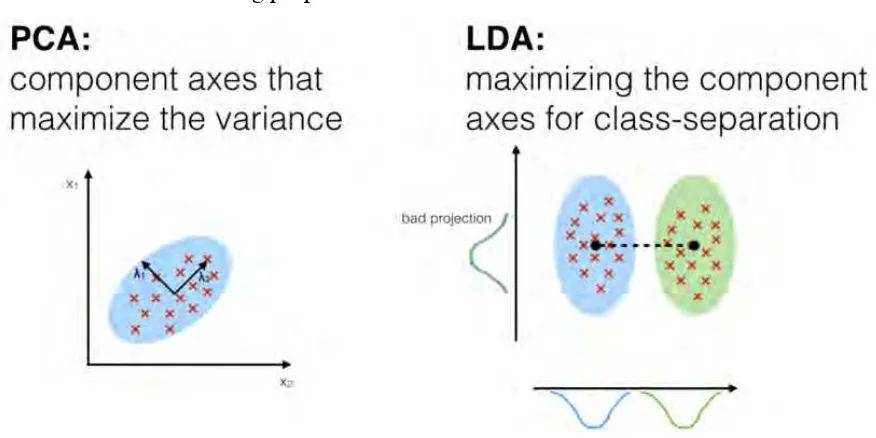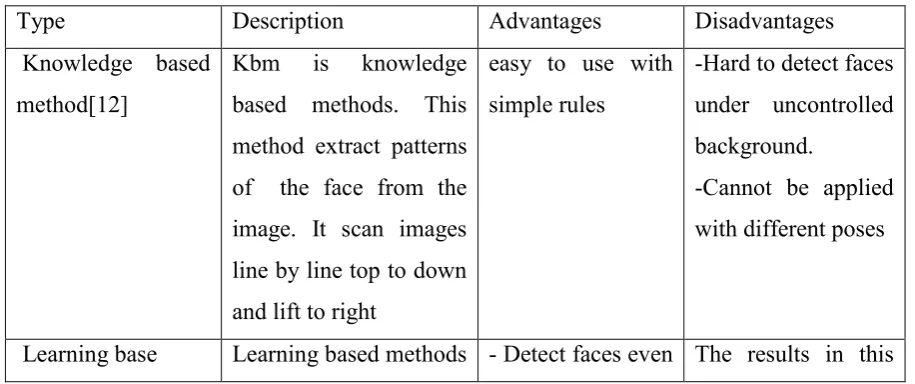II
RECOGNITION OF FACE DETECTION SYSTEM BASED ON VIDEO
SARI ABDO ALI MOHAMMED
A report submitted in partial fulfillment of the requirements for the degree of mechatronics engineering
Faculty of Electrical Engineering
UNIVERSITI TEKNIKAL MALAYSIA MELAKA
I
“I hereby declare that I have read through this report entitle recognition of face detection system based on video and found that it has comply the partial fulfillment for awarding the degree of Bachelor of Electrical Engineering (Mechatronics)”
Signature : ………
Supervisor’s Name : NURSABILLILAH MOHD ALI
III
I declare that this report entitle “ Recognition of Face Detection Based on Video” is the result of my own research except as cited in the references. The report has not been accepted for any degree and is not concurrently submitted in candidature of any other degree.
Signature : ...
Name : SARI ABDO ALI MOHAMMED AL-DABAS
IV
ACKNOWLEDGEMENT
I would like to express my special thanks of gratitude to my supervisor NURSABILLILAH MOHD ALI for her sincere guidance along the project. Secondly, I also would like to thank my panels, lecturers and friends for their contribution into my project by giving comments and advices to improve it.
V
ABSTRACT
VII
3.4 Introduction 20
3.5 Software 20
3.5.1 OpenCV2.3.1 20
3.5.3 Visual Studio 2010 21
3.5.4 Configuration of openCV with Visual Studio 2010 22
IX
4.8 Matching the similar points ... 35
4.9 A successful recognized frontal face ... 35
4.10 Recognition of frontal face with dark background ... 36
4.11 Main function of face detection code ... 37
4.12 Cropping the detected face ... 37
4.13 Recognition using PCA ... 38
4.14 Recognition with LDA ... 38
4.15 the result of PCA with Eigenface and LDA with fisherface ... 39
X
LIST OF TABLES
Table Title Page
2.1 Emgu implementation in C# 9
2.2 Methods of face detection 13
3.1 Camera specification 23
4.1 experiment PCA and LDA 39
1
CHAPTER 1
1 INTRODUCTION
1.1 Project background
Face detection and face recognition become important issue in the new technology. These types of technologies have various applications in different fields. Security and identifications are mostly the biggest fields for face recognition and detection.
Face detection is the process of finding faces and being able to differentiate them from the background or other objects. Face detection has been carried out for up to around five decades and it considers the first step for any automatic face recognition system and computer Interact system. A computer does not know what the pictures look like or understand what face mean but it can recognize patterns, matrixes and numbers. Face detection is not straightforward. It has many methods with different algorithms to change the faces in a picture to data to be implemented in computers [1].
For example, the template-matching methods are used for face localization and detection by computing the correlation of an input image to a standard face pattern. The feature invariant approaches are used for feature detection of eyes, mouth, ears, nose, and so on. The appearance-based methods are used for face detection with Eigen face neural network and information theoretical approach [2].
2
Figure 1.1 The application of face recognition
1.2 Motivation
Nowadays, face detection has many applications in most of the new devices in the market. It is used in digital cameras, smart phones and many other devices. A lot of researchers, engineers and technologists have enriched this field with hundreds of inventions from 1960s until now. Smarts phones like Samsung brand as Figure 1.2.a show have face detection feature when the camera is open and display people detected faces. In the future if this Samsung application adds a database for people names it will be able to detect and recognize people identities as shown in Figure 1.2.b.
3
Figure 1.3 : b) Improved application in the near future
Recently, crimes have increased slightly in all over the world especially in Malaysia due to the multiracial and the verities of foreigners. Because of lack of security precautions there is a lot of robbery accidents reported every day. All the security cameras in street work for the purpose of recording. These records could be used for further investigation to recognize the people on the records. The database has to contain information such as names and pictures for all people in the country including the foreigners so that when security surveillance cameras detect a face of person, it can search for the related information in the database.
Figure 1.4: Face recognition with local and global database
4
Face recognition can be used even in college or schools where a system can be designed to take attendance in classes. Calling the student names and checking their attendance take time that’s why lecturers tend to pass the attendance list to student to sign as prove that they are in the class. But the problem is that some students sign for others even if they are not in the class. So as a solution for this, a face recognition system can be developed to eliminate such phenomena. With using the right algorithm and high resolution camera, the system have to achieve high rate of recognition.
Each year there is new formula, new algorithm and new programing language. In the future people might not need id identification or passports to travel. By linking a global database with face detection and recognition programs a great result will be gained.
1.3 Problem statement
Faces are a good biometric because of the facial differences between peoples. There are many parameters effect the rate of recognition such as the resolution, the position of the camera and the distance between a person and the camera. However, there are many challenges that trouble researchers in this field. A lot of effective factors can limit face detection and recognition. These factors affect the appearance of face such as enlightenment, face poses, occlusion (sunglasses, hairstyle, make up), and face expressions and camera quality.
To be able to recognize the identity, the programmer must consider the fact that people take photos or videos with different orientation, poses and facial expressions (smiles, sad and surprised faces as changeable facial expression). The brightness of the back ground changes the recognition and the detection of faces and might display wrong detection results.
5
1.4 Objective of Project
The objectives of this project are as followed:
- To develop an algorithm for frontal face detection. - To develop algorithm face recognition
- To analyze the effect of light changes on face recognition.
1.5 Scope of Project
This project involves the implementation of openCV and its configuration with c++. It covers face detection method which is developing an algorithm that able to use the provided data set as in order to detect faces. The database used is a collection of images from internet (200 positive images containing faces and 300 negative images do not have faces). The project covers two sets of database, dataset for detection from the internet and dataset for face recognition.
The preprocessing involves image cropping for the detected faces in the video. The taken images have to go through preprocessing procedures where the pictures normalized and scaled then remove noise from the pictures. The project also covers face recognition which is the way taking the detected face and compare it with the pictures in the database to find match for it.
The recognition stage carried out using c# and Emgu library. The project will not cover the detection of side faces or a rotated faces as well as the use of other programing languages such as c#, Python, matlab.
6
1.6 Project Report Outline
Thesis outline have five chapters. Chapter 1 is an introductory for the project and explains the purpose of this project, the scope and the problem statement. In chapter 2 Literature review is discussed. This chapter provides a detailed background of what others have done in face detection and recognition field. It generally covers their work and compares their different methods and studies.
Chapter 3 shows the methodology that has been followed in the project and describes the procedures for the design in details as well as a flow chart, provide specifications and discuss the data and software implementation.
7
CHAPTER 2
2 LITERATURE REVIEW
2.1 Introduction
This chapter summarizes a review about face detection and recognition previous studies. The methods that many researchers have done in face detection and recognition, the information they collect, the advantages and disadvantages of each one of them.
2.2 Detection and recognition studies
The authors present a real time face recognition comprising of face detection and recognition [1]. The main purpose of their research is to make the system easy and fast focusing on exploring the use of image preprocessing as a preparatory step to decrease error rates. The researchers use AdaBoost algorithm to detect faces on video or picture. Figure2.1 illustrates the steps followed to complete the recognition process.
Figure 2.1: Face recognition processes [1]
8
normalization. The darkness is removed from the picture after processing the five steps. The result form the pre-process is in gray color.
This pre-process is important to remove noise and illumination effect in the image. The image is fed after that to histogram and fisher liner discriminate (FLD) classifier. The effect of this explains the difference on histogram for the image before and after preprocessing. The result of this research shows an improvement in recognition time process with less complexity.
Another research [2] develops face detection and recognition system based on Davinci technology. The system uses a moving target detection and tracking. The system detects a moving target. If there are faces detected, the faces will be located by AdaBoost algorithm classifier. The facial feature is processed using PCA. The method of Nearest Neighbor is used to match and compare the facial expressions
Figure 2.2: Recognition steps for Cui Baoxia research [2]
9
Moreover, it is used to train the strong classifiers that form the cascaded multi-layer ear detector. The extended Haar-like feature is applied in order to construct the space of the weak classifiers. They used the feature based method system, which operates faster compared to pixel-based method.
Figure 2.3 demonstrates the extended set of Haar-like features prototype including 4 edge features, 2 center-surround features and 8 line features. The black areas indicate the negative weights while the white areas indicate the positive weights.
Figure 2.3: Feature prototype of simple Haar-like and Center-surround Features [3]
2.3 SURF
Speeded up robust feature is a fast algorithm for image detection and description presented by Dr. Herbert Bay. SURF can be considered as an updated version of SIFT. The functionality of SURF is parted to three main stages: the interest points, the neighborhood of the interest points, the end descriptor vectors. Surf function mainly is a matching tool to compare or match the similarities between two images [5][6]
10
SURF uses blob structure to find the interest points on a picture. The point detector search for the interest points repeatedly by using a method called Hessian-matrix. The fast variant method is applied to the neighborhood of the interest point to localize the interest points. The descriptors vector connects lines between the interest points of two images or between the reference image on the program and the displayed face in video.
2.4 Emgu CV
EMGU CV is an advance image processing cross platform .Net wrapper to open CV images processing libraries. Emgu CV is a new version of open cv which entirely written for C#. The advantage of EMGUcv is that it might be compiled for Mono and hence is capable of running on any platform Mono supports, including android, windows phone, mac and linux.
There are efforts have been expended to have a pure C# application meanwhile the headings have to stay ported, matched with managed C++ application anywhere heading libraries can merely be involved. But then again it is fit worth it always offers the comfort knowing that your code is cross platform.
Table 2.1 : Emgu implementation in C#
2.5 Face Recognition
11
hand, the video based recognition depends on the sequence of the images or the frames extracted from the video which have more data about the face of the person.
There are a few advantages of using still-image face over video based systems.one of the advantages is that the images have higher resolution. As a result, face recognition algorithms can identify people faces more accurate. However, the still image based recognition is beneficial in organized situations where the faces pose and the light illumination are stable. An example of the controlled environment is while taking subjects picture at the airport check in .
The drawbacks of stillimage recognition happen when a organized environments are unattainable. Security camera is a good example of this situation which could be used to recognize people identities in a public place. In this case, video-based recognition produces better outcomes. The clear advantage of video-based face recognition happens in conditions where the photo resolution is slightly low and the video is nonstop. Videobased systems make the most of both spatial and temporal variations in a subjects face.
Face recognition research [7] implemented using PCA method with field-programmable gate array (FPGA). The skin colored method was used to detect faces and PCA algorithm for extracting the feature from a reduced frame picture. The detected face is saved and stored as image vector on the field-programmable gate array memory. The reference image in the database is subtracted and normalized then passed to matching circuit to do the recognition. Euclidean algorithm calculate the distance for the eginspce projection for the pictures, then based on that calculation ,the decision is made for recognizing the face.
12
2.6 Principle Component Analysis
An algorithm developed by Turk and Pentland which called Principle Component Analysis (PCA) that treats face recognition as a two dimensional recognition issues or prolems [9]. The accuracy of this algorithm relies depends on the way that the faces are uniform in stance and enlightenment or illumination
.
PCA (Principle Component Analysis ) can deal with minor varieties in these two variables or factors, however execution is maximized if such varieties are constrained. The algorithm essentially includes projecting a face onto a face space, which catches the most extreme variety among faces in a numerical structure or mathematical form.
Figure 2.5: PCA algorthm
During the preparation and training stage, every face image is represented as a column vector, with every entry relating to a image pixel. These image vectors are then standardized with respect to normal average face. Next, the algorithm finds the eigenvectors of the covariance matrix of standardized appearances by utilizing a speedup method that lessens the quantity of multiplications to be performed.
13
projection. The base estimation of these comparisons is chosen and compared with the threshold calculated during the preparation stage. Regarding to this , if the value is greater than the threshold,then the face is new. Else, it is a known face [10].
2.7 Linear Discriminant Analysis
Another common algorithm utilized as a part of face recognition is linear discriminant analysis (LDA). In spite of the fact that, this algorithm was at first developed for data classification, it has been adjusted to to face recognition.
As figure2.6 illustrate that, while PCA concentrates on discovering the most extreme variety inside of a pool of images, LDA recognizes the distinctions inside of an individual and those among people or individuals.
Figure 2.6: PCA and LDA projection
That is, the face space made in LDA gives higher weight to the varieties between people or individuals than those of the same person. Subsequently, LDA is less sensitive 10 to lighting, posture, and expression varieties [11]
14
variations inside of the image of the same individual while the recent catches variety among classes of people or individuals.
LDA therefore computes the inside-class scatter matrix and the between-class scatter matrix, characterized by two individual mathematical formulas or scientific equations. Next, the ideal projection is picked such that it "maximizes the ratio of the determinant of the between-class scatter matrix of the projected sampless to the determinant of the inside of class scatter matrix of the projected samples” [11].
This guarantees the between-class varieties are allocated higher weight than the inside of class varieties. To keep the inside of class scatter matrix from being singular, PCA is normally connected to starting or initial image set.
At last, a surely understood mathematical formula is utilized to decide the class to which the target or object face belong or has a place. Since we have reduced the weight of between class variety, the outcomes or results will be generally relatively insensitive to varieties.
2.8 Face detection methods
Face detection can be implemented in any application by using different methods. Currently, there are four methods are used for face detection
Table 2.2: Methods of face detection
Type Description Advantages Disadvantages
Knowledge based
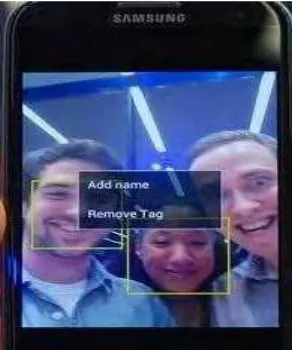
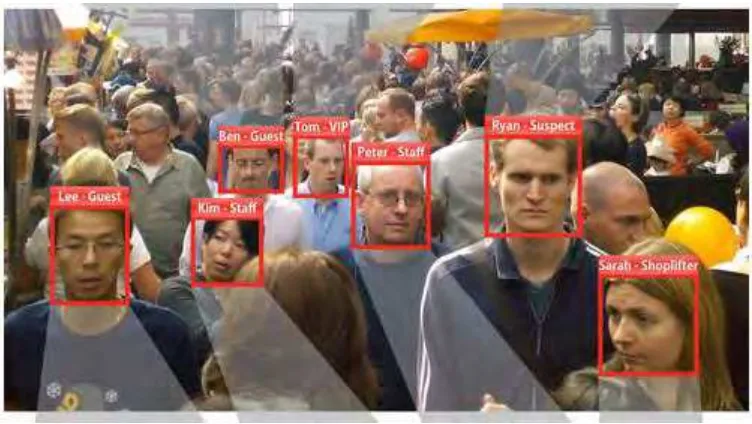
![Figure 2.2: Recognition steps for Cui Baoxia research [2]](https://thumb-ap.123doks.com/thumbv2/123dok/490168.54078/18.595.163.447.337.573/figure-recognition-steps-for-cui-baoxia-research.webp)
![Figure 2.3: Feature prototype of simple Haar-like and Center-surround Features [3]](https://thumb-ap.123doks.com/thumbv2/123dok/490168.54078/19.595.183.407.242.395/figure-feature-prototype-simple-haar-center-surround-features.webp)
